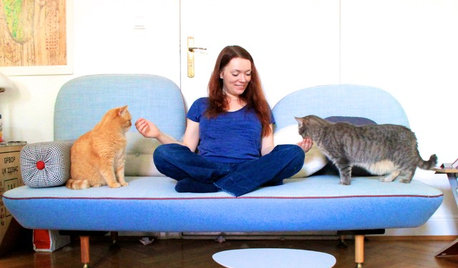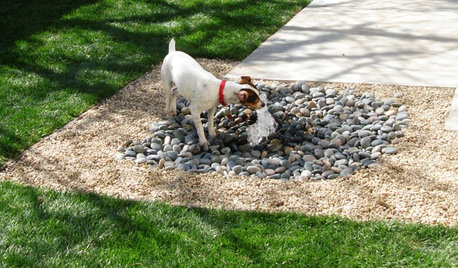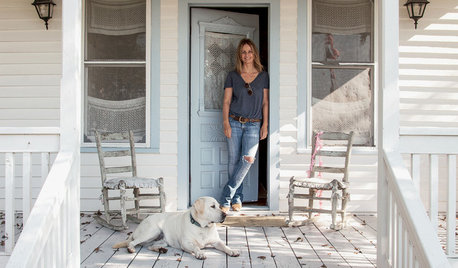Scaly leg mites chickens
goatster
17 years ago
Related Stories

PETSWorld of Design: Pampered Pets and Their 10 One-of-a-Kind Homes
Fall in love with these critters and their clever living spaces, from a cat playground in France to a chicken house in the U.S.
Full Story
GARDENING AND LANDSCAPINGGenerate Buzz as a Beekeeper
Fresh honey and happy flowers are just two of the perks of a backyard beehive. These 5 guidelines will help you get started
Full Story
REMODELING GUIDES15 Ways to Design an Easy-Clean Home
Spend more time doing what you love with these pointers for minimizing cleaning needs throughout the entire house
Full Story
MOST POPULAR8 Backyard Ideas to Delight Your Dog
Cue the joyous soundtrack. These pet-friendly landscape and garden ideas will keep your pooch safe, happy and well exercised outdoors
Full Story
FEEL-GOOD HOME6 Design Ideas for Happy Pets
Keep your dog or cat feeling safe and in high spirits, and you'll all feel more at peace. Here's how
Full Story
TASTEMAKERSCatching Up With the Queen of Shabby Chic
Rachel Ashwell defined a style embraced by countless fans over the past 25 years. Find out what she’s turning her sights to now
Full Story
BUDGET DECORATING12 Easy Decorating Ideas Inspired by Nature
Budget goes beautiful with arrangements and projects drawn from the great outdoors
Full Story





velvet_sparrow
goatsterOriginal Author
Related Professionals
Marco Island Landscape Architects & Landscape Designers · Doctor Phillips Landscape Contractors · Hilton Head Island Landscape Contractors · Lewisville Landscape Contractors · North Richland Hills Landscape Contractors · Palos Heights Landscape Contractors · Nashville Fence Contractors · Albany Fence Contractors · Antioch Fence Contractors · Chandler Fence Contractors · Fair Oaks Fence Contractors · Newark Fence Contractors · Pensacola Fence Contractors · Baker Decks, Patios & Outdoor Enclosures · Quincy Decks, Patios & Outdoor Enclosurescheribelle
patrick_nh
horselady54733
velvet_sparrow
horselady54733
velvet_sparrow
horselady54733
mohorseman
velvet_sparrow
bridgetb
velvet_sparrow
thumpher
islandmanmitch
thumpher
brendan_of_bonsai
islandmanmitch
runningtrails
Coastal Portable Buildings
crazydogmom57_verizon_net
spottedbat_yahoo_com
rodlouis1_bigpond_com_au
brendasauer_yahoo_com
reedanthony46_gmail_com
velvet_sparrow
reneeg1977